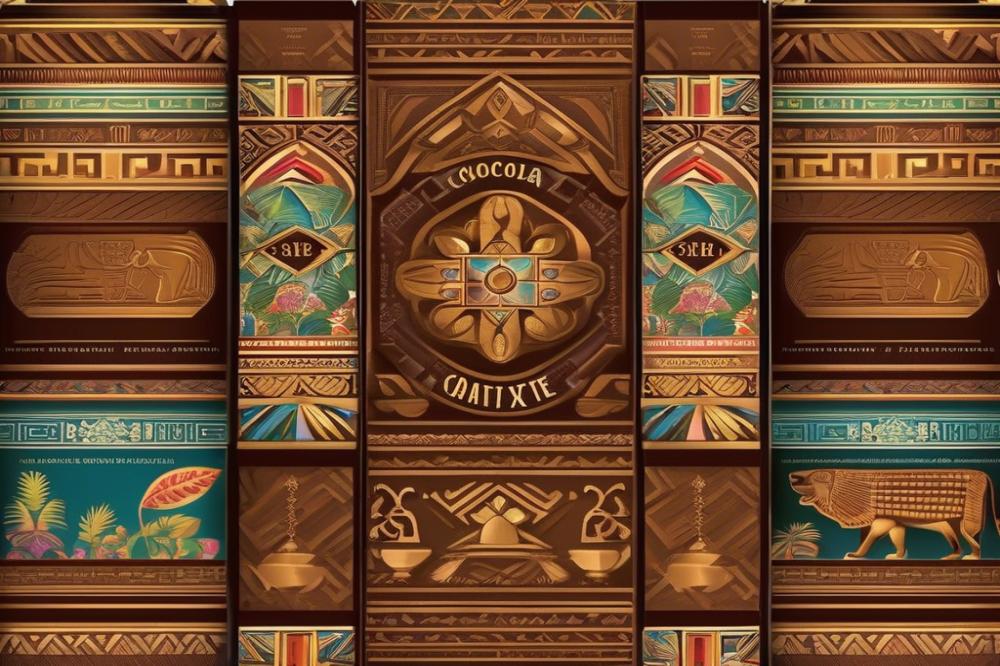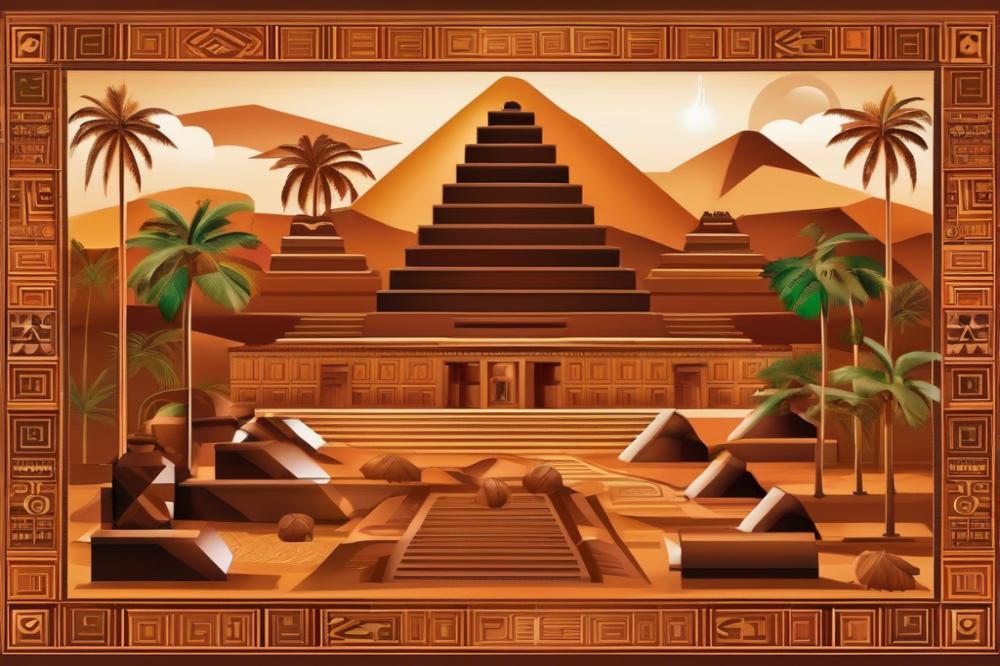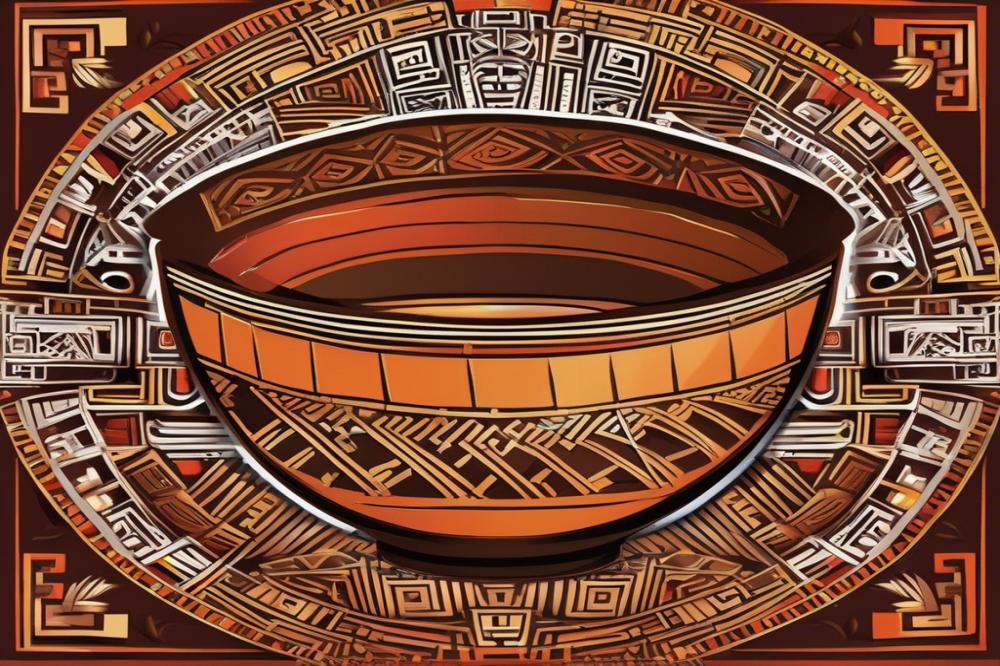The Evolution of chocolate packaging Through the Ages
Chocolate has a rich history, dating back thousands of years. Originating from the ancient civilizations of Central America, this delightful treat has transformed significantly. Initially, chocolate was consumed as a bitter drink by the Mayans and Aztecs. Over time, it became sweeter and more accessible, evolving into the solid bars we love today.
Packaging plays a vital role in how chocolate is marketed and perceived by consumers. It is not just a protective layer; it serves as a canvas for branding and design. Each unique package tells a story, aiming to attract buyers and evoke emotions. How a product looks can influence a person’s choice at the store. Eye-catching designs can capture attention, while clever branding builds loyalty.
The journey of chocolate packaging has witnessed tremendous innovations. materials have shifted from simple wraps to luxurious foils and sustainable options. Retro packaging has made a comeback, appealing to those who cherish nostalgia. Similarly, artisanal packaging reflects a growing trend toward handcrafted goods. Consumers today gravitate toward brands that prioritize sustainability, making eco-friendly packaging essential as well.
Understanding these consumer trends helps chocolate makers appeal to a diverse audience. The evolution of packaging continues to adapt, reflecting changing tastes and values. As we explore this fascinating topic, it becomes clear that chocolate packaging goes beyond appearance; it encapsulates a deep narrative about culture, quality, and creativity.
The Beginnings of Chocolate Packaging
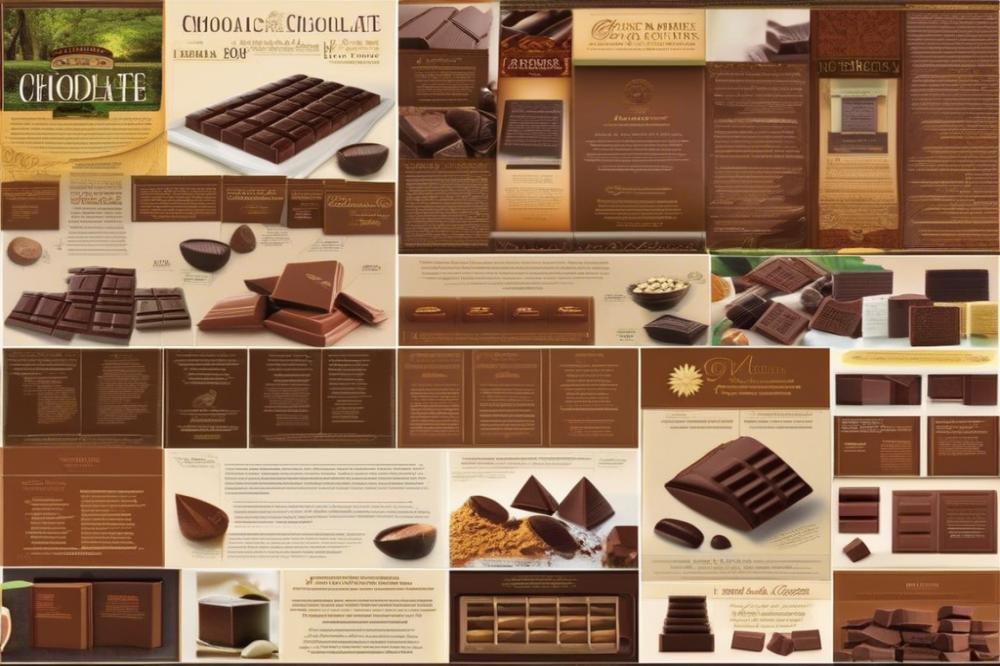
Long before chocolate became the delight it is today, ancient Mesoamericans discovered its rich flavors. They consumed chocolate as a drink, favoring its bitter taste and energizing effects. Early methods of storage were basic yet practical. Natural materials like leaves and ceramic pots served as the first containers for this coveted product.
Leaves, often from various plants, wrapped around cacao beans. They provided a simple barrier against the environment. Ceramic pots, with their durable design, also played a significant role in keeping chocolate safe. These containers, though utilitarian, signified the early relationship between chocolate and its first consumers.
Over time, the function of packaging evolved. What started as a need to protect and store gradually shifted toward aesthetic considerations. Designs began to reflect culture and artistry. Consumers grew more interested in how chocolate was presented. Brand identity blossomed alongside this new focus. Artisanal packaging emerged as a way to attract attention and convey quality.
The marketing landscape adapted as well. Companies realized that how chocolate was packaged could influence buyers’ decisions. Clever designs and appealing graphics became tools to show off flavors and differentiating factors. Consumer trends began to favor visually striking products, leading to innovations in materials and branding strategies. Retro packaging saw a resurgence, as nostalgia became a selling point.
Sustainability also started to emerge as a pressing theme in packaging choices. As awareness grew about environmental issues, brands sought to make conscious decisions. Eco-friendly materials shifted priorities away from purely aesthetic goals. The evolution of chocolate packaging, from functional to artistic and now sustainable, paints a picture of changing times and tastes.
19th Century Innovations and Branding
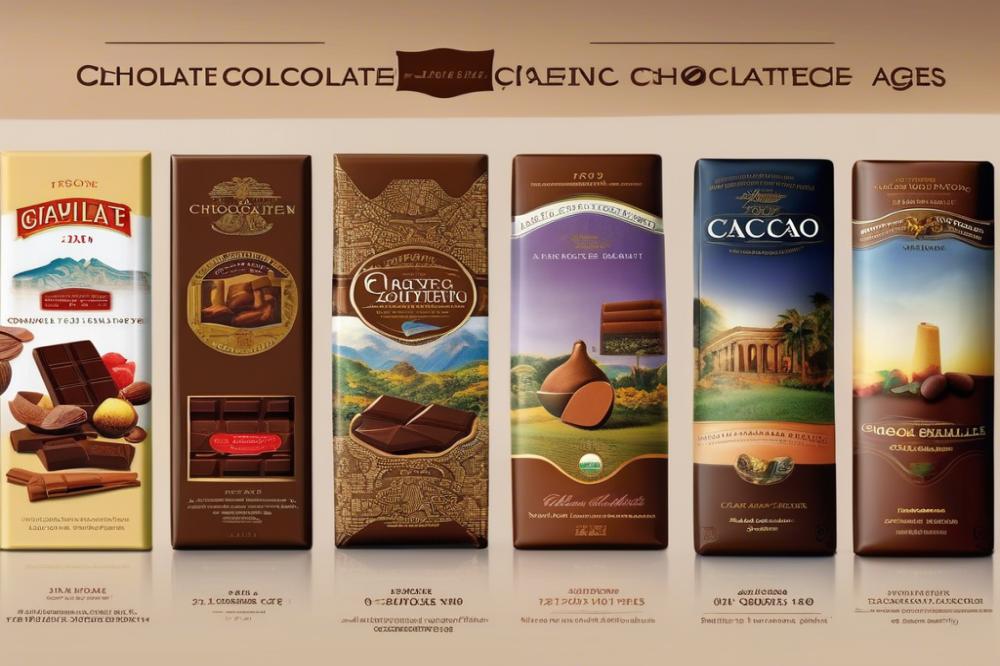
The 19th century marked a significant turning point in the world of chocolate. Commercial chocolate production took off during this era, making it accessible to more people. As factories began to churn out confections on a larger scale, a need for innovative packaging arose.
Metal tins and paper wrappers became the prominent materials for packaging. These new designs not only kept chocolate fresh but also captured the attention of consumers. Colorful illustrations adorned wrappers, telling stories of quality and taste.
Branding started to impact consumer choices heavily. With many companies entering the market, standing out became essential. Creative packaging designs helped brands carve out their identities, guiding shoppers to select their products over competitors.
Notable brands like Cadbury and Lindt emerged during this period, each bringing their own flair to packaging. Cadbury’s distinctive purple wrapping created instant recognition. Lindt dressed their chocolate in elegant boxes that showcased their craftsmanship.
As branding evolved, so did consumer trends. Shoppers began to associate specific designs and materials with quality. Retro packaging enjoyed a revival, appealing to those seeking nostalgia in their treats.
Artisanal approaches to packaging also gained traction. Some small producers favored sustainability, opting for eco-friendly materials. This attention to the environment aligned with a growing awareness among consumers about the impacts of packaging waste.
Marketing strategies were refined alongside these changes. Chocolate brands used creative visuals to convey luxury and indulgence. The evolution of packaging reflected broader shifts in society’s tastes and values, enabling companies to tap into the emotional connection people have with chocolate.
The 20th Century: Marketing and Consumer Trends
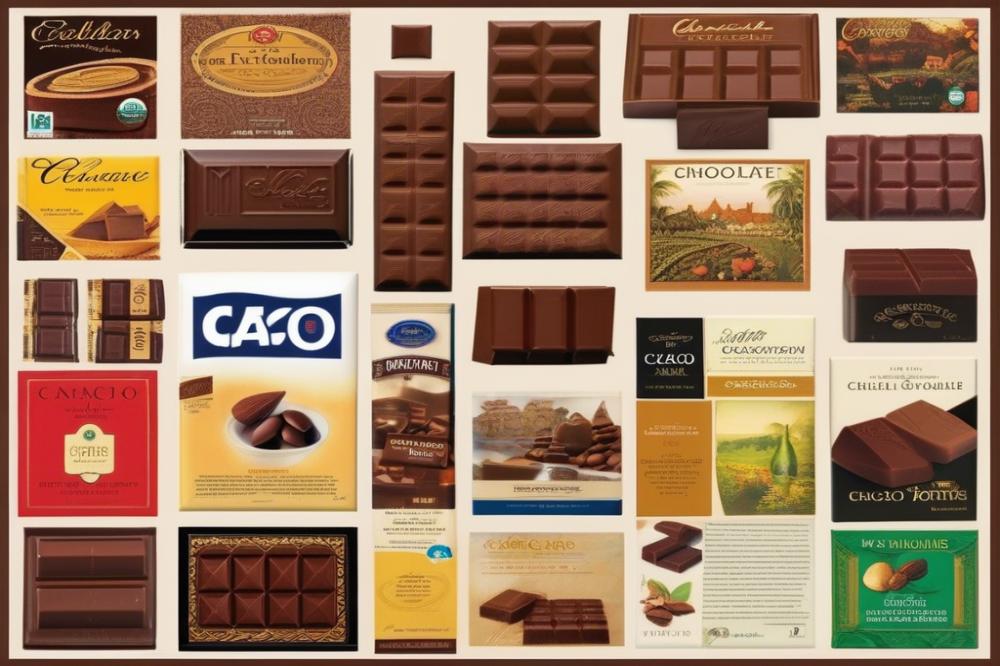
Throughout the 20th century, chocolate packaging underwent remarkable evolution. Designers began to embrace creativity in their work. Bold colors and eye-catching graphics became popular. Brands started using foil wrappers, which not only looked appealing but also preserved freshness. The choice of materials played a significant role in attracting consumers. Packaging was no longer just functional; it was a way to tell a story.
Advertising and marketing strategies had a substantial impact. Companies began to understand the power of branding. Slogans, catchy jingles, and memorable mascots helped products stand out. This was the era when brands realized that consumers often made choices based on visual appeal and presented lifestyle. The message wasn’t just about chocolate itself; it was about what enjoying that chocolate represented for the consumer.
Nostalgia emerged as a powerful tool in the industry. Retro packaging designs made a comeback as brands tapped into consumers’ fond memories. Familiar logos and vintage elements graced chocolate boxes, creating an emotional connection. Shoppers felt a sense of warmth when they glimpsed these designs on store shelves. Such strategies appealed to both older generations and younger consumers looking to discover what came before.
The shift towards luxurious packaging marked a new trend for premium products. Artisanal chocolate makers focused on elegance and craftsmanship. Beautifully designed boxes featuring high-quality materials communicated a sense of exclusivity. This appeal to luxury became vital in a marketplace filled with choices. Sustainability also began to find its place in packaging practices. Brands started considering the environmental impact of their materials. Consumers responded positively to those efforts, favoring products that reflected their values.
Innovation in chocolate packaging consistently adapted to trends. As the century progressed, companies embraced new technologies, such as resealable wrappers. This feature provided convenience, appealing to on-the-go lifestyles. Flavors and varieties of chocolate were highlighted through sleek, modern designs. Each change reflected the needs and desires of the evolving consumer base.
Sustainability in Chocolate Packaging
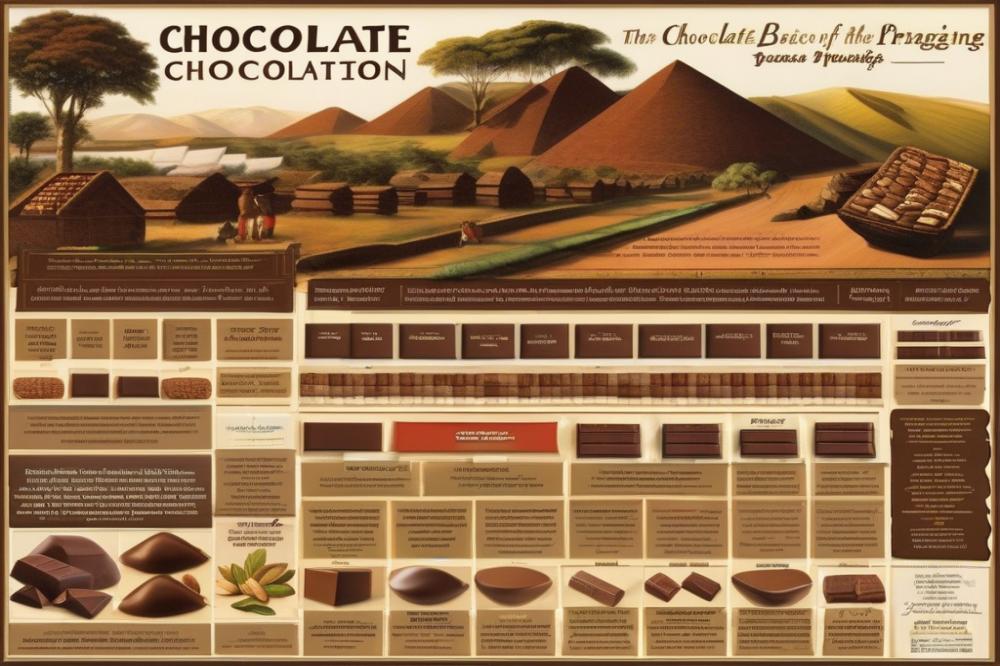
The rise of environmental consciousness has transformed many industries, and chocolate is no exception. Today, consumers care deeply about the ecological impact of their purchases. This shift in consumer trends is driving brands to rethink their packaging strategies. Sustainable choices resonate with those who want to contribute positively to the planet.
Innovative materials are at the forefront of this movement. Companies are exploring plant-based plastics, compostable films, and recycled paper. Such materials can reduce waste and minimize the carbon footprint. Imagine chocolate wrapped in something as natural as the product itself. By choosing eco-friendly materials, brands enhance their reputation while appealing to mindful shoppers.
Artisanal packaging has become popular among smaller chocolatiers. They often prioritize the aesthetics of their wrappers. Yet, their careful design is also about sustainability. Many use handmade papers or inks derived from natural sources. These practices are not only environmentally friendly but also create a unique brand identity. This approach allows smaller businesses to stand out in a crowded market.
Innovations in Eco-friendly Solutions
Technological advancements are paving the way for more eco-friendly packaging solutions. For instance, some companies are developing edible wrappers made from seaweed or rice. These groundbreaking ideas can revolutionize the industry. Other brands are investing in biodegradable alternatives that break down quickly in landfills.
Retro packaging is also making a comeback, connecting to nostalgia while promoting sustainability. Vintage designs often require less material and can emphasize a brand’s commitment to the environment. Bright colors and engaging graphics attract attention and serve as a reminder of the past in a modern context.
Leading Brands in Sustainable Practices
Several brands are taking noteworthy strides in sustainable chocolate packaging. One standout example is Tony’s Chocolonely. This company uses fully recyclable wrappers to align with their mission of fairness and sustainability. Their branding focuses on transparency, making it clear how their choices impact communities and the environment.
Another great case is the brand Alter Eco, which prioritizes sustainable materials for its packaging. They utilize compostable wrappers and aim for a cradle-to-cradle approach. This philosophy respects the earth while promoting responsible marketing and consumer behavior.
Such initiatives highlight an important evolution in the chocolate industry. By embracing sustainability, brands enhance their image while contributing to a healthier planet. As shoppers demand eco-conscious options, companies that adapt will capture their attention and loyalty.
Artisanal and Boutique Chocolate Packaging
The rise of artisanal chocolate makers has changed the way we think about candy. Small-batch producers focus on quality over quantity. They create chocolate that not only tastes great but also looks incredible. This movement reflects a broader trend toward handcrafted goods. Consumers are increasingly drawn to items that feel personal and authentic.
Unique packaging designs can convey the craftsmanship that goes into each piece. For these makers, the presentation is just as important as the chocolate itself. Elegant wrappers, colorful boxes, and creative shapes catch the customer’s eye. Materials often include eco-friendly options. This highlights sustainability, which is a priority for many shoppers today.
Branding plays a crucial role in how artisanal chocolates are marketed. The overall image of a brand can influence buying decisions significantly. Many buyers prefer small-batch aesthetics that reflect their values. Retro packaging resonates with those who appreciate nostalgia. This connection helps elevate the chocolate’s allure.
Innovations in packaging continue to emerge. Some chocolatiers use interactive elements, like QR codes, to engage customers. Others might opt for minimalist designs that focus on pure elegance. Standout artisanal chocolate packaging often tells a story. It can reflect local culture or even the origins of the ingredients used. Each detail is carefully chosen to create an emotional connection with the consumer.
Look at brands like Compartés and Purdys for inspiration. They have implemented bold designs that showcase their distinctive chocolates. These companies demonstrate how packaging can speak directly to an audience. The evolution of chocolate packaging is a reflection of changing consumer trends. An emphasis on craftsmanship, sustainability, and personalization continues to drive success in this industry.
Recent Innovations in Chocolate Packaging
Technological advancements are shaping how chocolate is presented to consumers. New materials and designs have changed the way brands market their products. For instance, companies now use biodegradable plastics and recycled papers. These eco-friendly options appeal to consumers who care about sustainability.
Smart Packaging and Its Implications for Chocolate Products
Smart packaging technology is another exciting development. This innovation can include QR codes or augmented reality features. Such elements allow consumers to interact with the product in new ways. They can scan a code to learn about the sourcing of the cocoa or watch a video on the making of the chocolate. This interaction can enhance the overall consumer experience and deepen loyalty to the brand.
Creative Packaging Solutions Enhancing the Consumer Experience
Artisanal packaging has gained popularity among chocolate makers. Unique designs that reflect the craftsmanship and story behind the product catch the eye. Retro packaging styles are making a comeback, attracting older consumers and those who appreciate nostalgia. Additionally, brands often use vibrant colors and catchy branding to leave a lasting impression.
Future Trends in Chocolate Packaging
As consumer trends shift, packaging will evolve further. Expect more brands to focus on minimalistic designs that highlight quality. Sustainability is not just a trend but a necessity. Future materials may be completely biodegradable or even edible. These changes will resonate with health-conscious and eco-aware shoppers.
Wrapping Up the Journey of Chocolate Packaging
The history of packaging chocolate has transformed dramatically over the years. Initially, chocolate was a luxury item, often wrapped in simple paper. As time passed, creativity took center stage. Bright colors and eye-catching designs emerged. Today’s packaging reflects a commitment to both aesthetics and functionality.
Displaying chocolate in an appealing way is key for sellers. Customers are drawn to packaging that tells a story. Strong branding and compelling visuals play a vital role in attracting buyers. Modern materials contribute to the overall appeal, making products not only eye-catching but also environmentally friendly.
Looking ahead, there are exciting possibilities for future developments in packaging. Innovations in sustainable materials could reshape what we see on store shelves. Advances in technology may introduce interactive elements, enhancing the consumer experience. Consumers want to connect with products, and engaging designs can foster that relationship.
In summary, packaging is more than just a protective layer. It represents a brand’s identity and values. As the chocolate industry continues to evolve, nothing will be more important than staying in tune with customer preferences and environmental concerns. Evolution in this field promises interesting transformations. The journey ahead looks sweet!

